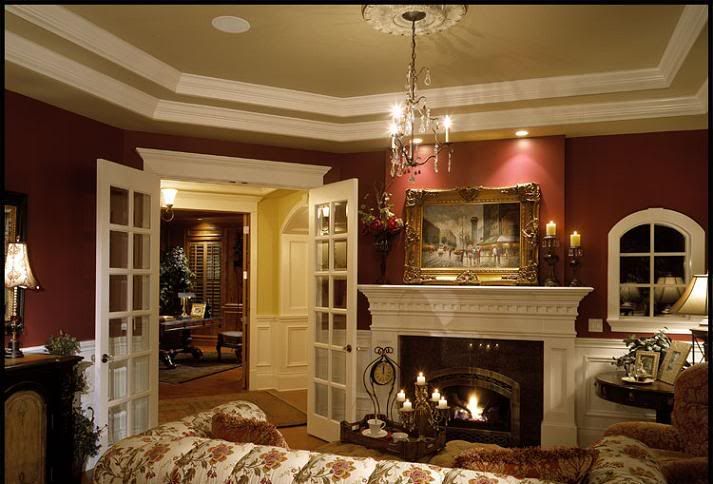Illustration: Gunnar Wennerberg The Willows tapestry design c1913
The Swedish designer Gunnar Wennerberg is probably better known inside and outside his native Sweden, for the innovative glass and ceramic decorative work that he produced during the last few years of the nineteenth century and the start of the twentieth century. However, Wennerberg also produced a certain amount of textile work, particularly but not exclusively for the Handarbetets Vanner and the Licium.
Wennerberg produced a number of tapestries during the first decade of the twentieth century and those shown in this article give some indication at least as to the style and compositional qualities that were very much associated with him at the time.
Wennerberg is often seen and categorised as an Art Nouveau designer, particularly as regards his use of foliage and flora for decorative means. However, his style bore little resemblance to the excesses of French and Belgian Art Nouveau and some would see it as somewhat typical of the Swedish love for nature based themes. This is born out distinctively with The Willow tapestry, which although having certain aspects in common with Art Nouveau, tends towards a much sparser and tranquil examination of nature than would be expected within the general Art Nouveau movement. This was one of Wennerberg's particular traits and it can be seen within the other compositions also shown here.
Illustration: Gunnar Wennerberg tapestry design c1905
It is interesting to note that it could be said that Wennerberg's extensive work within the glass and ceramics industries, was somewhat reflected within his later textile work. The imagery and compositional balance are interestingly similar in style with what would be expected both within stained glass work and also that of ceramics. The use of light, particularly within The Willows, is almost similar to a ceramic glaze, and perhaps this was not purely coincidental but could be seen as that of a conscious or unconscious bleeding through of ideas and strategies from another medium altogether.
The greatest boon to cross discipline designers and artists is when the tools and vocabulary of one discipline are used either for the same purpose or for that of a completely different aspect within another discipline. It is this cross-fertilization that has given us many purposeful creative constructs and indeed a number of happy accidents as well.
Wennerberg, although not strictly a textile designer or artist, should be included within the framework of Sweden's prestigious textile crafts, particularly that of tapestry design of which Wennerberg produced some excellent examples that were neither derivatave of the rest of contemporary Europe, or indeed that of Swedish traditional crafts. His work is an excellent example of the individuality that can be achieved by both artist and designer when considering the importance of the uniqueness of an individual's creative journey, rather than that of fashion, fad and styling.
Illustration: Gunnar Wennerberg tapestry design c1909
Incidentally Gunnar Wennerberg should not be confused with the other Gunnar Wennerberg, who was the Swedish poet and composer who died in 1901, Wennerberg the designer died in 1914.
Reference links:
Scandinavian Design (Taschen 25)
RORSTRAND: SWEDISH ART NOUVEAU PORCELAIN, FROM THE ROBERT SCHREIBER COLLECTION
Rorstrand Porcelain: Art Nouveau Masterpieces
Vavda tapeter (Swedish Edition)
SWEDISH TEXTILE ART: Traditional Marriage Weavings from Scania (The Nasser D. Khalili Collection of Swedish Textile Art)





















No comments:
Post a Comment